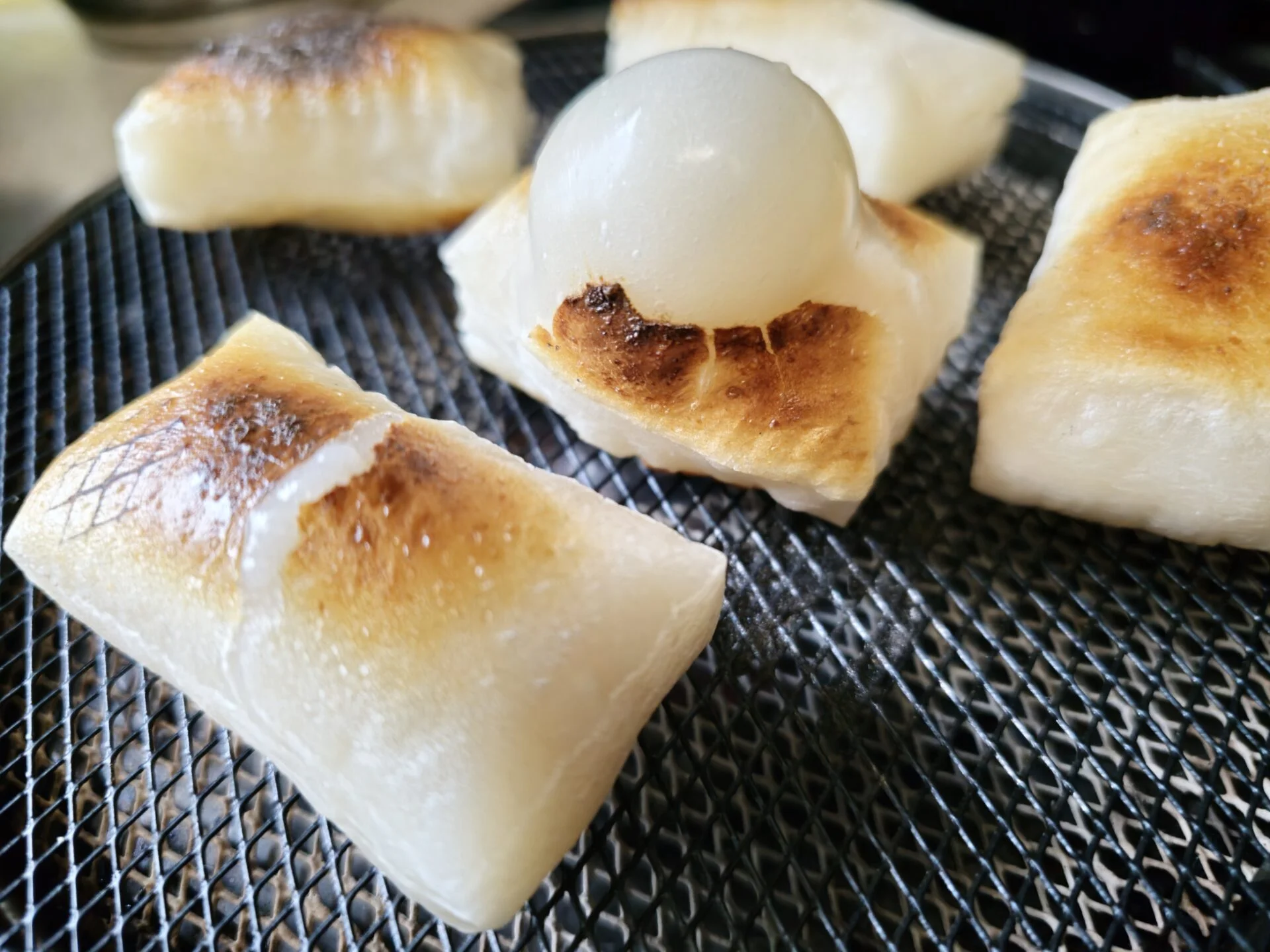What is mochi? Rediscovering the Charm of Mochi: Why Japan’s Traditional Food Captivates the World
Mochi, a traditional Japanese rice cake, has captivated food lovers worldwide with its unique texture and versatility. This sticky, chewy delicacy is not just a treat but a significant part of Japanese culture and cuisine. Let’s dive into the world of mochi and explore why this pounded rice confection has become a global phenomenon.
What is Mochi Made Of?
Mochi is a Japanese rice cake made from mochigome, a short-grain japonica glutinous rice. The rice is pounded into a paste and molded into various shapes. Its sticky texture and subtle sweetness make it a versatile ingredient in both sweet and savory dishes.
The Origins of Mochi : A Tradition Rooted in Japanese Food Culture
The history of mochi dates back to the Yayoi period (300 BCE – 300 CE). With the introduction of rice cultivation, mochi made from rice began to be produced, becoming deeply ingrained in Japanese food culture as rice farming spread.
During the Heian period (794-1185), the nobility began practicing “mochitsuki” (mochi pounding), establishing mochi as an essential element in rituals and celebrations. In the Kamakura period (1185-1333), mochi spread to samurai society, used in prayers for victory and celebratory events.
By the Edo period (1603-1867), mochi had become widely popular among common people, particularly as a New Year’s tradition. During this time, mochi became a food made in homes to celebrate special days.
Thus, mochi has a long history in Japanese food culture, deeply rooted in people’s lives. Its history is closely tied to the evolution of Japanese culture and society, continuing to play an important role in modern times.
The Art of Mochitsuki
Mochitsuki, the traditional mochi-making process, is a labor-intensive yet culturally significant activity. During this process, steamed sticky rice is pounded with wooden mallets in a mortar called an usu. This repetitive pounding transforms the rice into a smooth, elastic texture characteristic of mochi.
How is Mochi Made? : A Deep Flavor Born from Simple Ingredients
The basic method of making mochi is remarkably simple. The main ingredients are just mochi rice and water. The rice is steamed, then pounded in a mortar with a pestle, and kneaded until it becomes sticky, resulting in mochi with its distinctive texture.
Despite this simple process, mochi has a profound flavor. This is because the starch in mochi rice changes with heat and pressure, creating a unique stickiness and elasticity.
In modern times, various methods have emerged, such as home mochi makers and simplified microwave methods. However, the traditional method of using a mortar and pestle is still cherished as part of Japanese culture, including its sound and visual appeal.
The Cultural Significance of Mochi: A Special Food Linked to Annual Events
Mochi is deeply connected to many annual events in Japan. The most famous is New Year’s mochi. “Kagami mochi,” displayed as decoration, symbolizes prayers for happiness and abundance in the coming year. While mochi is enjoyed year-round, it holds special significance during Japanese New Year celebrations. Kagami mochi, a stack of two round mochi cakes topped with a mikan (Japanese tangerine), is a traditional decoration and offering during this time.
“Tsukimi dango” (moon-viewing dumplings) are essential for admiring the autumn moon, their round shape mimicking the full moon. For the Doll Festival, “hishi mochi” is eaten, while “kashiwa mochi” is enjoyed on Children’s Day.
Thus, mochi carries meaning beyond mere food, embodying Japanese culture and tradition. It’s a food that makes Japanese people feel the changing seasons and life’s milestones, deeply rooted in their hearts.
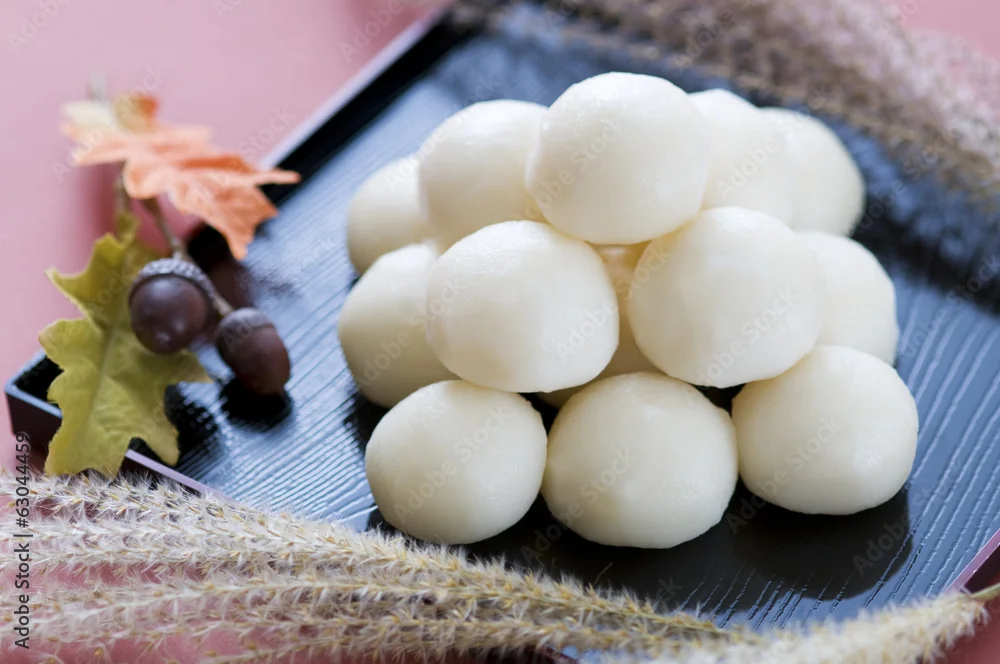
Wagashi Using Mochi: Fusion of Tradition and Innovation
Mochi is widely used as an ingredient in various Japanese sweets (wagashi). A representative example is “daifuku mochi“. This simple yet profound sweet consists of mochi wrapped around sweet bean paste. Modern variations include versions filled with various fruits, which are popular.
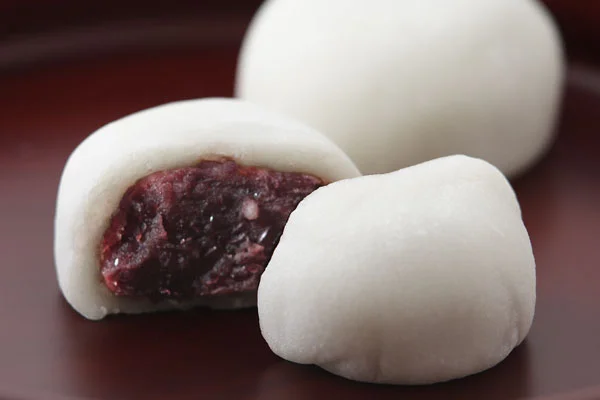
“Kusa mochi” is mochi mixed with mugwort, a sweet that evokes the arrival of spring. “Abekawa mochi” is mochi dusted with kinako (roasted soybean flour), loved for its simple flavor.
Recently, creative wagashi using mochi have also emerged. For example, “nama choco daifuku” combines mochi with chocolate, while “mochi ice cream” wraps ice cream in mochi. These modern interpretations are particularly popular among younger generations.
In this way, mochi serves as a foundation for traditional wagashi while also being a source of new creations. Its potential continues to expand even now.
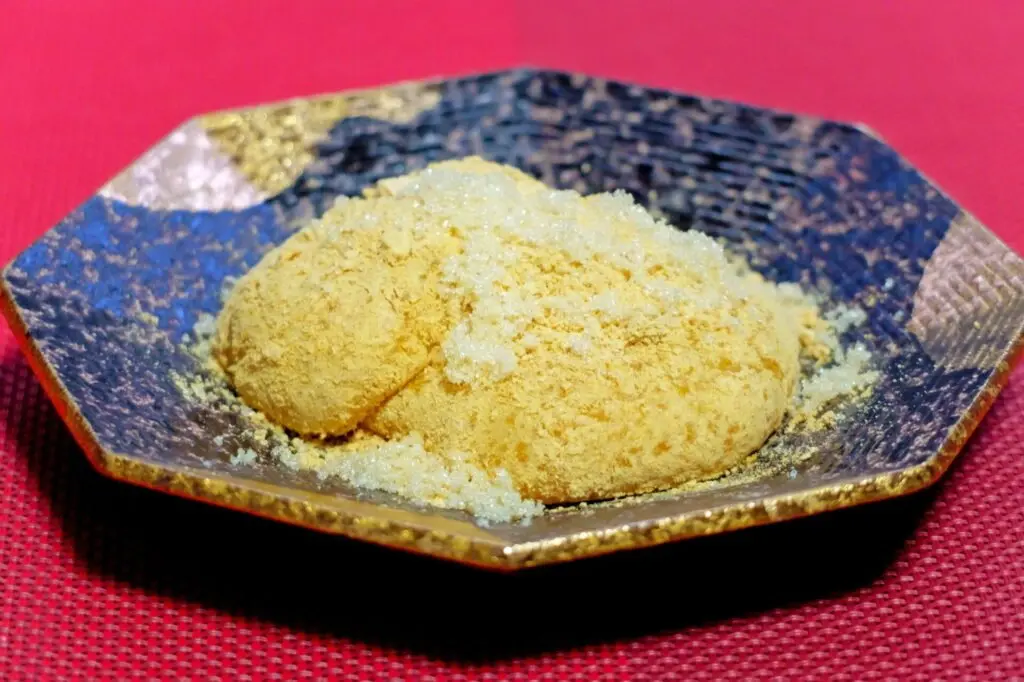
Health Benefits of Mochi: Nutritional Value of a Traditional Food
Mochi is not only delicious but also highly nutritious. Its main component, carbohydrates, is an important energy source. It also contains protein, B vitamins, and minerals. In particular, “amylopectin” contained in mochi rice is quickly digested and absorbed, converting rapidly into energy, making it suitable for pre-exercise meals.
Moreover, mochi is a gluten-free food, making it a safe option for people with wheat allergies. However, as mochi is a high-calorie food, excessive consumption should be avoided. It’s important to enjoy it in moderation as part of a balanced diet.
Tips for Enjoying Mochi: From Traditional Ways to Modern Arrangements
There are many ways to enjoy mochi. A traditional method is “ozoni,” a soup containing mochi. Each region has its unique ingredients and flavors, reflecting local culture.
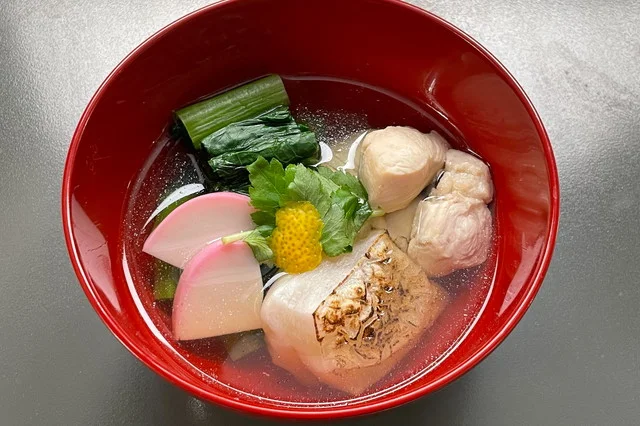
“Kinako mochi,” grilled mochi dusted with kinako and sugar, is also popular. “Isobe yaki,” mochi grilled with soy sauce and wrapped in nori seaweed, offers a simple yet deep flavor. Modern arrangements include mochi pizza and mochi in stews, fusing with Western cuisine. Mochi is also used as a topping for salads and soups, incorporated into health-conscious dishes.
When enjoying mochi, be aware that its stickiness can pose a choking hazard. It’s recommended to chew thoroughly and eat it with tea or other beverages. From traditional methods to modern arrangements, mochi offers a wide range of enjoyment. Why not try various ways of savoring mochi according to your preferences and the season?
Conclusion
From its humble origins as a staple food to its current status as a beloved treat, mochi has truly stood the test of time. Its ability to adapt to modern tastes while maintaining its traditional essence is a testament to the enduring appeal of this Japanese rice cake. Whether you’re trying it for the first time or rediscovering its charms, mochi offers a unique taste of Japanese culture and culinary tradition.
